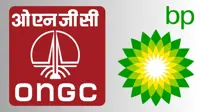El Nino’s impact on monsoon still far from clear: expert
12 May 2014
Weather experts have been saying there is a ''strong possibility'' of the emergence of the El Nino effect, which is generally supposed to adversely affect the vital monsoon rains in India.
However, the precise correlation between 'El Nino' and droughts is still unclear, according to an expert study.
El Nino is a phenomenon in which the warmer ocean currents along the Pacific coast of South America, above normal temperature, divert the flow of moist winds from the Indian Ocean, reducing rainfall in the Indian sub-continent. But water resources expert P M Natarajan, member of the working group of the Tamil Nadu Planning Commission and senate member of Bharathidasan University, said the link is far from clear.
Though six of the ''most prominent droughts in India'' since 1871 have been 'El Nino droughts,' including those in 2002 and 2009, ''…not all El Nino years lead to drought in India,'' Dr Natarajan says in a paper, 'El Nino Impact On the Indian Water Resources', which he unveiled in Chennai today.
For instance, 1997-98 was a ''strong El Nino year,'' but that did not cause any drought in India. On the other hand, a moderate El Nino in 2002 resulted in one of the worst droughts, he points out. However, ''one thing is clear: El Nino does affect the weather in India in terms of monsoon rains''.
Referring to the India Meteorological Department's forecast released last month that the rainfall this year was likely to be 95 per cent of the Long Period Average (LPA) – in other words, deficient - Natarajan expressed apprehension that El Nino is likely to affect Tamil Nadu most, as the state already face a 62 per cent water deficit annually.
For the state, which is often forced to plead with Karnataka for its due share of the Cauvery water every year, this year's rainfall loss could be significant - ''The loss of water during this season is likely to affect the Cauvery delta in a bigger way since Karnataka has to release up to 134 tmcft during this [southwest monsoon] season,'' he said.
Stating that India's 'anticipated per capita storage' of water should go up to 1,000-1,200 cubic metres, Natarajan argues that in the long run, only ''inter-basin water transfer'' could help to bring about this level of storage. ''Unless we do that, we cannot create additional irrigation potential and produce 420 million tonnes of foodgrains for the Indian population during 2050, besides producing enough hydro-power'' for all.''
To stave off a water crisis, he also advocates other methods of water conservation: rainwater harvesting, groundwater recharge, recycling industrial waste water, desalination of seawater, more emphasis on dry crops cultivation and adoption of micro-irrigation practices.

.webp)
.webp)

.webp)

.webp)


























